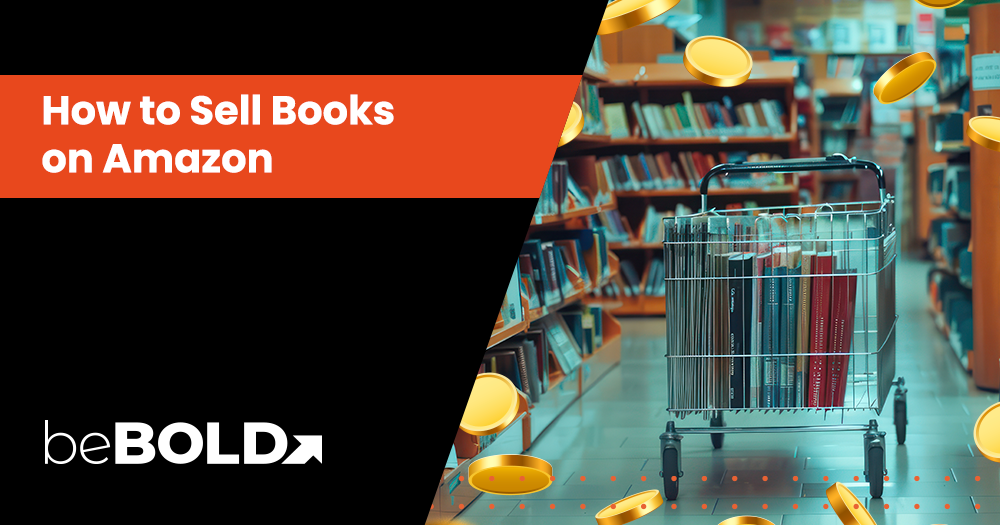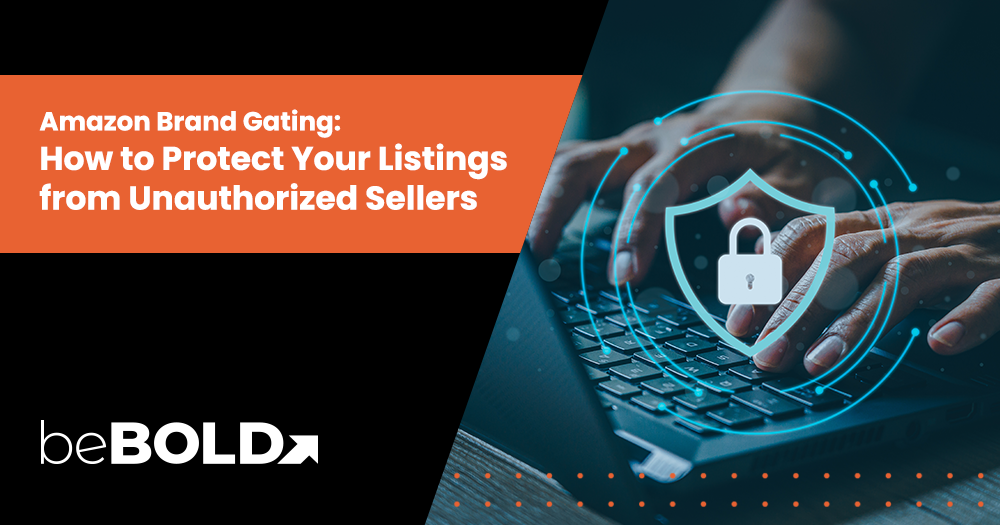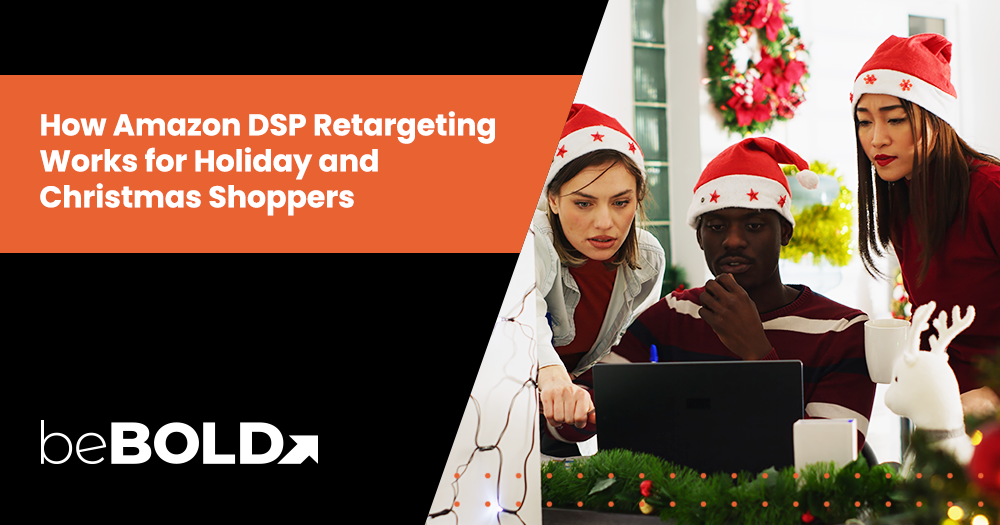Key Highlights: How to Sell Books on Amazon
- Selling books on Amazon remains a beginner-friendly way to build passive income 📈, thanks to high demand for print and a massive existing buyer base.
- You can start by selling your own used books, flipping thrift store finds, or even publishing your own titles through KDP 🛒.
- Setting up a seller account is easy, and you can choose between Individual (pay-per-sale) or Professional (monthly fee) plans depending on your volume 📋.
- For inventory, sourcing from thrift stores, online marketplaces, or bulk wholesalers can help maximize margins 💸.
- Listing books effectively means using strong keywords, clear condition notes, and optimizing product details for search visibility 🔎.
- Sellers can choose between FBA (Amazon handles fulfillment) or FBM (self-fulfillment), each with different profit and workload impacts 🚚.
- Smart pricing, good packaging, fast shipping, and great customer service are key to building positive reviews and scaling profits 🌟.
- Whether you're selling used textbooks or launching niche books, Amazon’s ecosystem offers a ready-made platform for scaling your book business 🚀.
Think Amazon is too saturated to start selling books? Let’s show you why it's a passive income strategy you are missing out on.
Books remain one of the most beginner-friendly and profitable product categories on the platform — whether you're decluttering your home library, flipping textbooks for profit, or launching your own publishing hustle.
In fact, Amazon’s roots as “Earth’s biggest bookstore” still give it an edge: it continues to dominate book distribution, accounting for 50–80% of U.S. book sales. And with over 300 million print books sold annually on the platform, there’s a thriving ecosystem just waiting to be tapped into (Source).
Why Selling Books on Amazon Still Works?

Even with the growth of eBooks and audiobooks, physical books remain in high demand. In fact, 32% of readers still prefer print, while another 33% read both formats — proving that print isn’t going anywhere (Source).
Amazon continues to be the top marketplace for books. Whether you’re reselling used copies, flipping textbooks, or publishing niche content, the platform offers a low-cost, high-reach way to get in front of buyers worldwide.
Why it still works:
- Built-in demand: Books are Amazon’s foundation — its systems still support book sales better than any other category.
- Low barrier to entry: Start with zero inventory by listing books from your own shelf.
- Emotional and collectible appeal: From self-help to first editions, books offer long-term value that digital formats can't replace.
- Infrastructure advantage: Amazon’s listing tools, shipping network, and global reach support sellers at any scale.
Market Data & Industry Insights
- The global book market generated over $64.35B in 2023, with projections to surpass $90B in 2024 (Source).
- The U.S. publishing industry alone contributes $ 28.1 B+ in annual revenue (Source).
- On Amazon, over 300 million print books are sold every year (Source).
- Amazon controls 50–80% of all U.S. book distribution, giving sellers immediate access to a massive buyer base (Source).
Quick Read- Amazon Ads For Books Work?
How to Sell Books on Amazon?

Selling books on Amazon can be both a low-risk side hustle and a scalable e-commerce business.
Here’s a step-by-step guide to get started:
Step 1: Choose a Book Type

Decide what kind of books you want to sell. The best categories for Amazon include:
- Textbooks – High resale value, especially during academic seasons.
- Non-fiction – Topics like business, health, cooking, and self-help perform consistently well.
- Comic books, memoirs, and spiritual titles – Popular among niche readers.
- Collectibles and out-of-print editions – Great for advanced sellers who understand value.
- Be cautious with children’s books and cookbooks, as they often have thinner margins unless niche-specific.
Step 2: Set Up Your Amazon Seller Account

You’ll need the following to register:
- A valid email address, phone number, and bank account.
- Tax information and a credit/debit card.
- Decide between the pricing options:
- Individual plan – No monthly fee, but a $0.99 charge per sale. Best for casual or low-volume sellers.
- Professional plan – $39.99/month, ideal if you’re listing more than 40 items/month or need access to bulk tools and advertising.
Step 3: Sourcing Books to Sell
You can source inventory in two ways:
- Used books: Great for budget-friendly sellers.
- Check thrift stores, yard sales, estate cleanouts, library clearance events, and Facebook Marketplace.
- New books: If scaling up.
- Purchase from wholesalers, overstock retailers, or directly from publishers. Look for liquidation deals to boost margins.
Step 4: Listing Your Books for Sale

- Use the ISBN to create listings automatically when available.
- For older or unique titles, manually input the title, author, edition, and other details.
- Follow best practices for discoverability:
- Use strong keywords in your title.
- Write a clear condition note.
- Add product images if you’re creating a new listing.
Step 5: Choosing a Primary Selling Plan
- Individual Plan – Suitable for selling fewer than 40 books/month. You pay per item sold.
- Professional Plan – Ideal for bulk sellers. Includes access to ads, inventory tools, and better catalog control.
Step 6: Shipping and Fulfillment Options
Choose how you want to fulfill orders:
- FBA (Fulfilled by Amazon):
- Amazon handles storage, shipping, and returns.
- You send books to their warehouse in advance.
- FBM (Fulfilled by Merchant):
- You manage shipping and customer service.
- More control, but requires effort and reliable logistics.
Step 7: Promoting Your Books

- Use Amazon Advertising to boost visibility.
- Share listings on social media or relevant online communities.
- Build an email list if you're creating a niche brand or a recurring buyer base.
Step 8: Optimizing Sales and Maximizing Profit
- Use automated repricing tools to stay competitive.
- Base pricing on book condition, rarity, and demand.
- For rare or collectible books, highlight unique traits like signatures, first editions, or limited prints.
Step 9: Managing Orders and Customer Service

- Ensure fast shipping, especially with FBM.
- Package books securely to avoid damage.
- Respond quickly to queries to maintain a high seller rating.
- Accurate descriptions and timely delivery are key to getting positive reviews.
beBOLD Tip: If you're launching your first book, explore How to Self Publish on Amazon to avoid beginner pitfalls.
How Do You Find Books to Sell on Amazon?

Sourcing books is one of the most profitable parts of selling on Amazon. Whether you're starting with zero budget or scaling with bulk inventory, here are the most effective methods to find high-potential books:
1. Sell Your Own Books (No Cost to Start)
It’s easy and completely free to begin—just start with your personal collection.
Look for books in good condition with resale potential, such as:
- Textbooks or reference guides
- Non-fiction (business, health, cooking, etc.)
- Complete fiction series or popular titles
- Biographies and coffee table books
Use the Amazon Seller App or ScoutIQ to check ISBNs and scan for profit potential.
2. Thrift Stores, Book Sales & Library Clearances
These sources offer some of the best margins in book reselling—often turning $1 finds into $20+ sales.
Look for undervalued books at:
- Library clearance events ($0.25–$2 deals)
- Goodwill, Salvation Army, and local thrift shops
- Yard sales and estate sales
- Book fairs and liquidation events
Bring a scanning app to evaluate titles in real time. Prioritize clean hardcovers, non-fiction, and textbooks.
3. Online Arbitrage
Buy low from websites and resell on Amazon:
- eBay, ThriftBooks, Facebook Marketplace
- Use Keepa to check price history and RevSeller for net profit estimates
- Target listings during clearances or seller liquidations
4. Buy Wholesale
Once you're ready to scale, consider bulk buying:
- Source new/overstocked books from Book Depot, Baker & Taylor, and BulkBooks.
- Look for remainder deals (brand-new, deeply discounted stock)
- Benefit from stable inventory and better margins
5. Free Book Sources
Free inventory = pure profit:
- Facebook Marketplace, Craigslist, curbside pickups
- College campuses and local move-out events
- Estate clean-outs or donation centers
Scan all books before listing to avoid unsellable damage.
If you are new to selling on Amazon, read our blog on how to start from scratch.
What are the Types of Books You Can Sell on Amazon?

To stay compliant and meet customer engagement expectations, you’ll need to understand book condition categories:
|
Type |
Criteria |
|
New |
Pristine, no marks or damage. Often sourced from wholesalers or publishers. |
|
Used – Like New |
Clean, minimal shelf wear. No writing or highlighting. |
|
Used – Good/Very Good |
Visible wear, possibly minor markings. Still complete and fully readable. |
|
Used – Acceptable |
Heavy wear or notes, but readable. Only list if demand exists. |
|
Collectible |
Rare editions, signed copies, or first prints. Provide detailed descriptions. |
Books That Sell Well on Amazon vs. Books That Don’t Sell Well on Amazon
Books That Sell Well:
- Textbooks & Exam Guides (MCAT, CPA, etc.)
- Non-Fiction (finance, real estate, wellness)
- Self-Help & Personal Development
- Niche Cookbooks (keto, vegan, etc.)
- Children’s Educational Workbooks
- Religious/Spiritual Titles
- Business & Investing Guides
- Collectibles (signed, first editions, rare)
Books That Don’t Sell Well:
- Generic mass-market paperbacks
- Outdated test prep, travel guides, or software manuals
- Fiction with no resale demand
- Damaged or incomplete books
- Restricted/gated books (require Amazon approval)
Want to optimize your books for search engines? Here’s how you can do that easily.
How to Estimate Your Sales and Profit When Selling Books on Amazon?
Before listing any book, it’s critical to know whether it’s actually going to make you money. Estimating your potential profit upfront can save you from investing in titles that will sit unsold or lose you money after fees.
Thankfully, Amazon and third-party tools make it relatively easy to forecast your margins, selling price, and likely turnover — even if you’re brand new.
1. Amazon Seller App (Free)

Scan any book’s barcode using the app to instantly see:
- Lowest FBA and FBM prices
- Amazon’s referral and fulfillment fees
- Expected profit based on your listed price
You’ll also see the Best Seller Rank (BSR), which indicates how well the book is currently selling. A BSR under 100,000 means strong sales; under 10,000 usually indicates a very fast-moving title.
2. FBA Revenue Calculator (Free)

Use the Amazon FBA Calculator to estimate:
- Fulfillment by Amazon (FBA) vs. Fulfilled by Merchant (FBM) costs
- Net profit after Amazon fees and shipping
- Break-even pricing and margin targets
Just enter the book’s ASIN or ISBN and plug in your sale price and shipping costs to see what you’d make.
Key Factors That Impact Profitability
When estimating your margins, be sure to consider:
- Amazon referral fee: 15% of the selling price (or $0.30 minimum)
- FBA fees: Vary based on size and weight (usually $3.22–$5.79 per book)
- Shipping costs: If using FBM, you cover postage. With FBA, you pay inbound shipping to Amazon’s warehouse.
- Book condition: New and “Like New” books command higher prices than those listed as “Good” or “Acceptable.”
- Storage fees: If using FBA, long-term inventory fees may apply for unsold books after 180+ days.
Example Profit Estimate
Let’s say you source a textbook for $2 at a thrift store. You list it via FBA for $34.99.
- Referral fee (15%): ~$5.25
- FBA fulfillment fee: ~$3.85
- Inbound shipping: ~$0.50
- Your cost: $2
- Estimated Profit: ~$23.39
Even accounting for margin fluctuation, this book is likely worth the buy.
Red Flags to Watch For
- BSR over 1,000,000: Indicates slow or no sales.
- Price drop trends: Use Keepa to ensure a title isn’t flooded with sellers.
- High competition: If Amazon itself is selling the same title, you may struggle to win the Buy Box.
Also Read- How to Do Amazon Keyword Research?
Selling New vs. Used Books
Choosing between selling new or selling used books comes down to your goals, budget, and sourcing strategy. Both options have potential, but each comes with its own pros, cons, and logistical considerations.
Here’s a quick comparison to help you decide what fits your approach best:
|
Aspect |
New Books |
Used Books |
|
Profit Margin |
Higher per unit |
Moderate, depends on sourcing price |
|
Upfront Cost |
High (requires wholesale or bulk sourcing) |
Low (thrift stores, donations, etc.) |
|
Restrictions |
May be gated or require invoices |
Fewer restrictions, open to most sellers |
|
Listing Appeal |
More Prime-ready, cleaner listings |
Must grade condition accurately |
|
Risk Level |
Lower returns if in perfect condition |
Risk of poor feedback if condition is misjudged |
|
Scalability |
Easier to scale with consistent supply |
Harder to scale, sourcing takes more time |
|
Best For |
Experienced or wholesale sellers |
Beginners, side hustlers, and low-investment models |
How Much Does It Cost to Sell Books on Amazon?
Selling books on Amazon can be very cost-effective, but you should understand the various fees involved before getting started. These costs depend on your selling plan, fulfillment method (FBA or FBM), and how you handle inventory.
Selling Plans
|
Plan |
Cost |
Best For |
|
Individual |
$0.99 per item sold |
Low-volume sellers (under 40 items/month) |
|
Professional |
$39.99/month flat fee |
High-volume sellers or those using bulk tools |
Amazon Fees You Should Expect
|
Fee Type |
Amount |
|
Referral Fee |
15% of the item’s sale price or $0.30 minimum |
|
Closing Fee (Books) |
$1.80 per item (applies to all book/media categories) |
|
FBA Fulfillment Fee |
~$2.47 to $5.85 for standard-size books |
|
Monthly Storage Fee (FBA) |
$0.78/cu. ft. (Jan–Sept) and $2.40/cu. ft. (Oct–Dec) |
|
Long-Term Storage Fee |
$6.90/cu. ft. or $0.15/unit (after 365 days) |
|
Shipping (FBM) |
You cover the cost unless charged to the customer |
|
Advertising (optional) |
Varies; starting as low as $1–5/day |
Quick Cost Scenarios
- Selling 10 books/month on Individual Plan:
Pay $0.99 per book + referral + closing fees = low overhead - Selling 50+ books/month on Professional Plan:
$39.99 flat fee + referral + closing/FBA fees = better margins at scale
Which Plan Should You Choose?
- Start with Individual if you’re testing the waters.
- Switch to Professional once you’re selling more than 40 items/month or want access to Amazon Ads, bulk uploads, and advanced reports.
How to Create and Format Your Book for Amazon KDP?

Want to get your planner KDP-ready without overcomplicating things? Here’s a simplified version of the process using Canva:
- Choose Your Specs – Decide on trim size (e.g., 6x9"), page count (min. 24), and whether you need bleed.
- Set Up in Canva – Create a custom-size design (in inches) based on KDP’s specs. Turn on margins and bleed if needed.
- Design Interior Pages – Add planner layouts like calendars, prompts, or checklists. Stick to black & white for lower print costs.
- Export Interior File – Download as “PDF Print” in RGB or CMYK (Pro users). Avoid crop marks unless required.
- Create Your Cover – Use KDP’s Cover Calculator to get exact cover dimensions. Design front, spine, and back on Canva.
- Export Cover File – Download as “PDF Print,” double-check margins, and keep visuals inside safe zones.
📘 For a detailed walkthrough with screenshots, check out our full Amazon KDP Publishing Guide to go from blank page to published product.
FBA vs. FBM: Which Fulfillment Strategy Maximizes Your Profit?
Your fulfillment method can make or break your margins—especially when selling books. Fulfillment by Amazon (FBA) offers speed and convenience, while Fulfilled by Merchant (FBM) gives you more control and lower upfront costs.
👉 Want a full breakdown? Check out our in-depth guide to FBA vs. FBM.
|
Feature |
Fulfillment by Amazon (FBA) |
Fulfilled by Merchant (FBM) |
|
Who handles shipping |
Amazon |
You (the seller) |
|
Prime eligibility |
✅ Included, boosts conversions |
❌ Not eligible by default |
|
Buy Box advantage |
✅ Higher priority |
❌ Less visibility |
|
Fees |
Per-unit fees ($2.47–$5.85) + monthly storage + long-term storage |
No FBA/storage fees, just shipping & handling costs |
|
Inventory control |
Amazon stores and manages it |
You manage storage and prep |
|
Scalability |
Easily scalable for large volume |
Manual fulfillment can limit scale |
|
Customer service & returns |
Handled by Amazon |
Handled by you |
|
Best for |
High-volume sellers or those valuing automation |
Low-volume sellers or those with cheap, local inventory access |
All set to start selling on Amazon? Here’s a quick recap of how to start selling for beginners!
Avoid These Costly Mistakes When Selling Books on Amazon

Many new sellers lose money due to avoidable mistakes. Here’s what to watch out for:
1. Mislabeling Book Condition
Amazon buyers expect accuracy. Misrepresenting a book as “Like New” when it has highlighting or bent corners will lead to negative reviews and returns. Use Amazon’s condition guidelines strictly.
2. Ignoring Amazon’s Fee Structures
Failure to account for referral fees, closing fees, and fulfillment costs often leads to negative margins. Always use Amazon’s FBA calculator or third-party profit tools before pricing.
3. Poor Packaging
For FBM, shipping a book in a bubble mailer without support can result in bent corners and damaged covers. Use rigid mailers or cardboard inserts to protect the product during transit.
4. Not Checking BSR or Demand
Listing a book with a BSR over 2 million or no historical sales data is risky. Use Keepa or ScoutIQ to verify if the book has sold recently and at what price.
5. Selling Restricted or Gated Books
Some publishers require approval. Selling without proper authorization can lead to account suspension. Always check listing eligibility before purchasing inventory.
Also Read- 10 Mistakes to Avoid With Amazon Product Research.
What to Do with Unsold Books: Smart Exit Strategies That Save Profit?

Even with good sourcing, some books won’t sell. Managing this excess inventory smartly can protect your margins and reputation.
1. Donating Unsold Books
If a book hasn't moved in 6+ months and shows no recent sales activity, consider donating it. Common donation options include:
- Salvation Army
- Goodwill
- Local libraries or schools
- Book drives or shelters
Donating also offers potential tax write-offs when documented properly.
2. Selling on Other Platforms
Some books that underperform on Amazon may still be viable elsewhere:
- eBay: More flexibility with condition and pricing; better for rare, vintage, or international editions.
- Facebook Marketplace or Craigslist: Good for local bulk lots or oversized books.
- BookScouter: Useful for comparing trade-in offers across multiple buyback platforms.
If you are looking for an alternative selling platform, TikTok is one of the best options to start- here’s how you can get started in easy steps.
Want to Grow Your Book Sales on Amazon the Smart Way?
Selling books on Amazon is more than just listing inventory — it’s about staying visible, competitive, and profitable in a fast-moving marketplace. Whether you're flipping used books, publishing niche content, or scaling your catalog, visibility is everything.
That’s where beBOLD Digital comes in.
We help Amazon sellers like you:
- Optimize product listings for better search placement and conversion
- Run data-backed Amazon Ads that actually deliver ROI
- Streamline pricing strategies with automated tools and real-time market insights
- Identify growth opportunities across your catalog
Our team doesn’t just run ads — the Seller and Vendor Management Services build systems that turn books into brands, and casual sellers into serious businesses.
Whether you’re selling used textbooks or launching your first KDP series, beBOLD Digital gives you the strategy, tools, and support to grow with confidence.
Let’s scale your Amazon book business — the smart way.
Start your journey with beBOLD →
Conclusion
Selling books on Amazon is one of the simplest, most scalable ways to launch (or grow) an online business. Whether you’re clearing out your shelf, flipping thrift finds, or publishing your own titles, the tools, the audience, and the profit potential are already built in.
Start small, stay consistent, and scale smart.
Because on Amazon, every book is a business opportunity — and your next best-seller might already be in your hands.
Frequently Asked Questions
1. How do I start selling books on Amazon?
If you're wondering how to sell books on Amazon, the first step is creating a free Amazon Seller account. From there, you can choose your selling plan, start sourcing books (new, used, or collectible), and list them using Amazon’s product tools. Whether you're selling your own collection or flipping finds from thrift stores, learning how to sell books on Amazon starts with taking consistent action.
2. Do I need a special license to sell books on Amazon?
No, you don’t need a special license to learn how to sell books on Amazon. Most sellers get started without any formal paperwork beyond their seller account setup. As long as you're following Amazon’s book condition guidelines and sourcing books legally, you're good to go.
3. What’s the difference between an Individual and Professional seller account when learning how to sell books on Amazon?
When exploring how to sell books on Amazon, you'll come across two account types: Individual and Professional. An Individual account is free with a $0.99 fee per sale—great for beginners. A Professional account costs $39.99/month and is ideal if you’re serious about scaling your book-selling business.
4. How much does it cost to sell books on Amazon?
Understanding costs is key when figuring out how to sell books on Amazon. Expect a 15% referral fee per sale, plus shipping or Fulfillment by Amazon (FBA) costs if you use that option. Individual sellers pay per item; professional sellers pay monthly. Many beginners start for free by selling books they already own
👉 Let’s unlock your next bestseller — Get Started with BeBold Digital









Comments